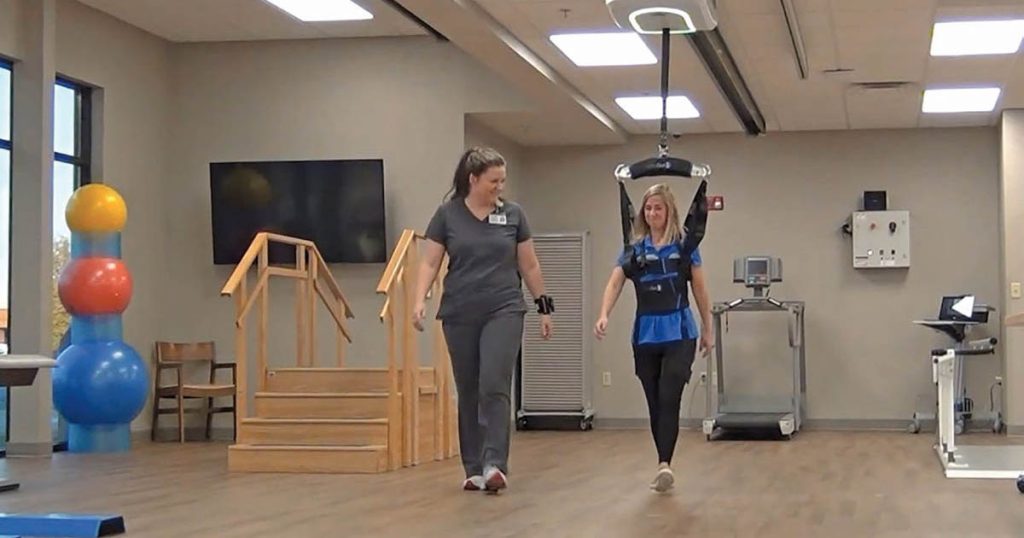
What is neurological rehabilitation?
Neurological rehabilitation is a customized program designed by a rehabilitation team for people with neurological diseases, injury, or disorders of the nervous system such as Alzheimer’s, ALS, brain injury, cerebral palsy, multiple sclerosis, Parkinson’s disease, spinal cord injury and stroke.
What are the benefits of neurological rehabilitation?
The beginning with one of our expert physical therapists will perform a comprehensive neurological evaluation, including: a thorough history, muscle strength evaluation, balance assessment, and functional mobility assessment. Once the impairments are identified, our physical therapy team will work with both patient and family to develop a treatment plan that will help to maximize function and restore independency.
“We will work hard to afford anything that can improve people lives”, this is our cornerstone at Max Rehab Physical Therapy.

We are proud to have SafeGait 360° Balance and Mobility Trainer® system which is a ceiling-mounted dynamic body-weight support (BWS) and fall protection system. It promotes a safe, efficient therapy session to individuals with a variety of impairments as they practice walking, improve strength and overcome balance concerns. Many clinical studies have proven that reducing the fear of falling can improve a patient’s confidence and encourage a more challenging, treatment plan.

Neuromuscular re-education is a therapeutic technique that is similar to balance training and can also be used to improve balance, strength, coordination, posture, kinesthetic sense and restore normal soft tissue tone and elasticity. Treatment may include balance exercises on a BOSU dome or AIREX balance pad while performing multi-directional tasks in a frontal, sagittal and transverse plane, thus challenging and strengthening fine and gross muscles to improve with core control, kinesthetic (positional) awareness and improve balance and stability. Tandem exercises along with a postural challenge may be utilized to evaluate muscle control and stability. The patient is allowed time to find the correct position of joints and to identify the direction of movement completed by the extremities. People of all ages can benefit from this type of exercise training regardless of past medical history or level of function.